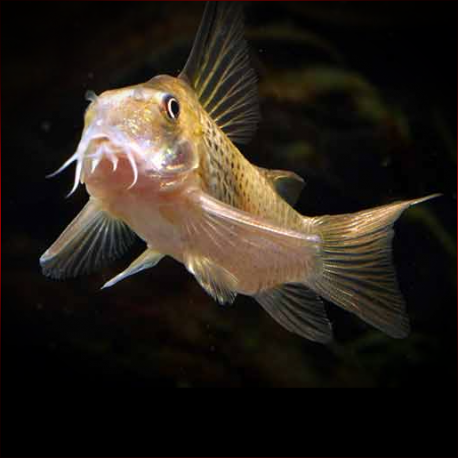More info
Datasheet
| Maximum Size | 6.5cm / 2.56inches |
| Temperature | 22°C / 71.60°F - 26°C / 78.80°F |
| Hardness | 2.02dgH / 36ppm - 12.05dgH / 215ppm |
| pH | 6.0-7.5 |
General Description
Corydoras Armatus, also known as Callichthys armatus, belongs to the family Callichthyidae within the order Siluriformes. These fish are native to the upper rio Madeira basin in Brazil and Bolivia and are often traded under invented names such as C. sp. ‘dorsalis' and C. sp. ‘ogawae', even though they are considered conspecific with C. armatus.
Aquarium Setup
For optimal care, it is recommended to keep Corydoras Armatus in groups of at least 4-6 individuals. The aquarium setup should include fine sand or clean rounded gravel as substrate. Decor choices are flexible, but it is crucial to provide adequate cover to ensure the fish feel secure in their environment. The water conditions should ideally maintain a hardness of 36-215ppm, a pH level between 6.0-7.5, and a temperature range of 22-26°C.
Behaviour
Corydoras Armatus are known to be peaceful and gregarious. They thrive in group settings and should be kept with a minimum of 4-6 individuals to promote their well-being in captivity.
Feeding and Diet
As foraging omnivores, Corydoras Armatus accept various sinking dried foods, along with small live and frozen varieties like bloodworms and Tubifex. To ensure optimal health, offering a diverse diet is recommended. It's crucial not to rely on leftover food from other aquarium inhabitants to sustain them.
Reproduction & Dimorphism
Sexual dimorphism in Corydoras Armatus is evident, with females typically growing larger and displaying a rounder, broader body shape, especially when gravid. Successful breeding can be achieved in a well-prepared aquarium environment with proper water conditions and suitable tank mates.
Habitat and Distribution
Corydoras Armatus is primarily found in the Río Huallaga watershed in Peru, particularly in the districts of Jeberos in Alto Amazonas and Huallaga in San Martín regions. Additionally, they have been recorded in the upper Rio Madeira system in Brazil and Bolivia, showcasing a diverse habitat range within South America.

